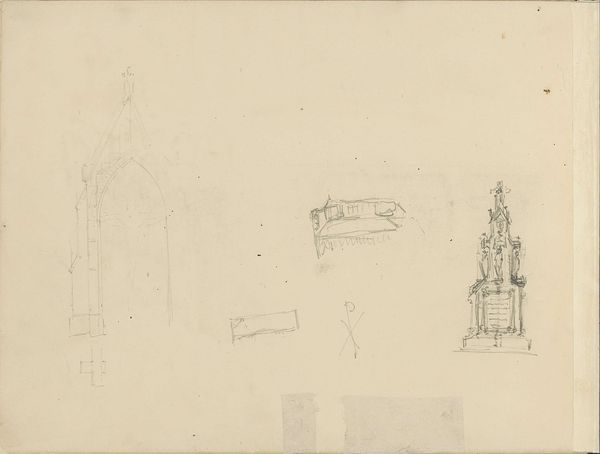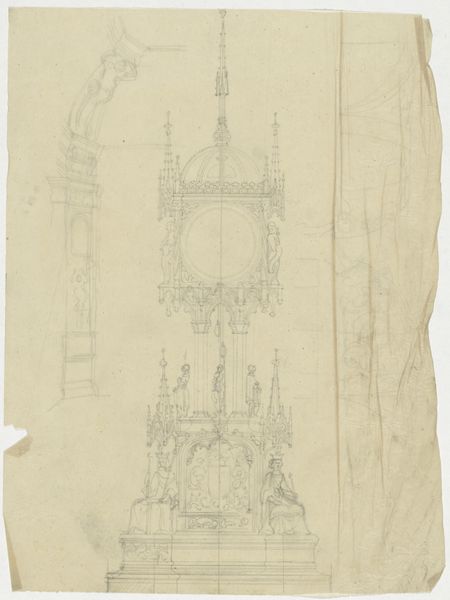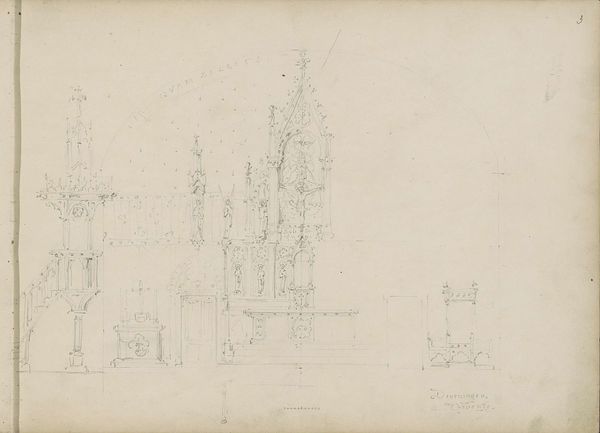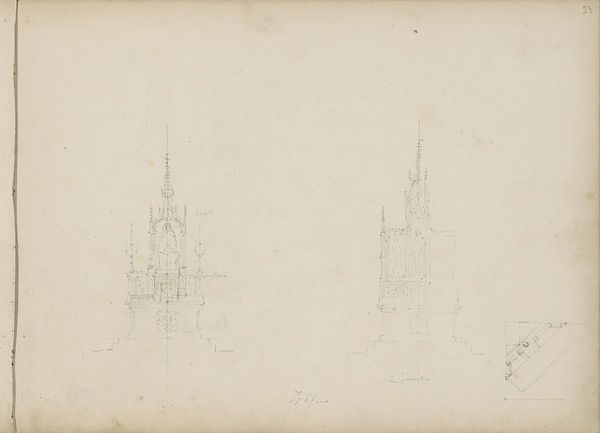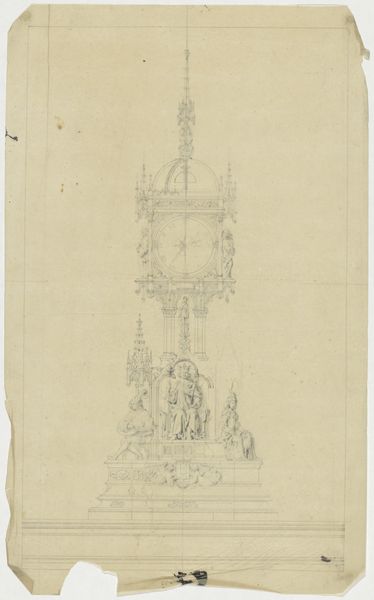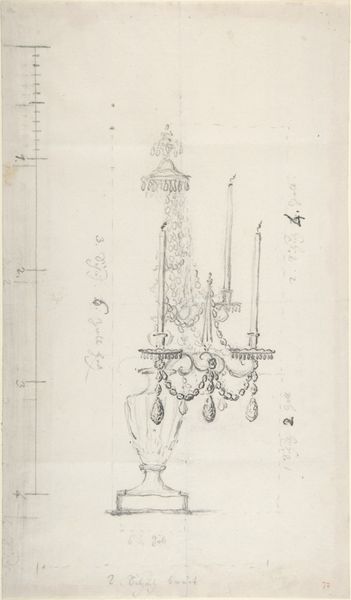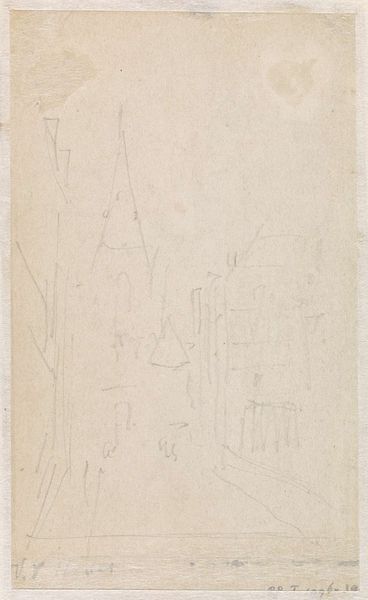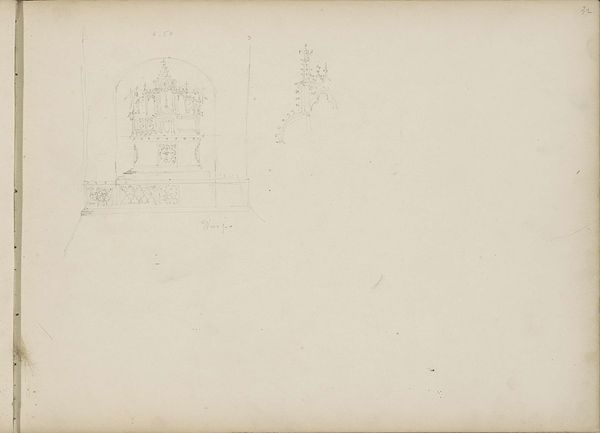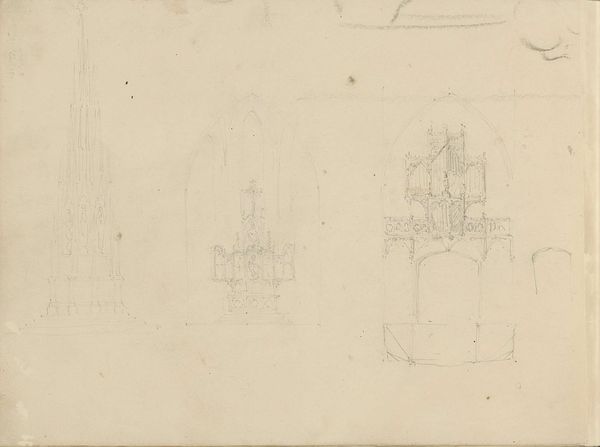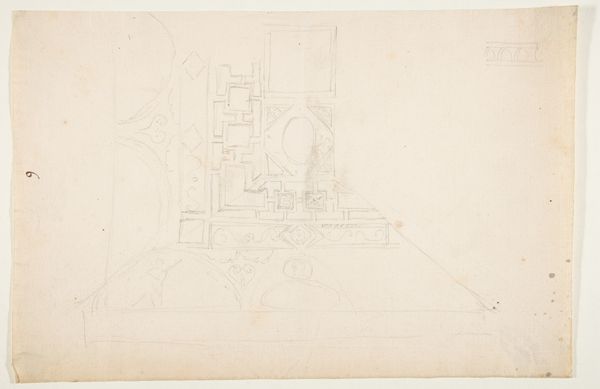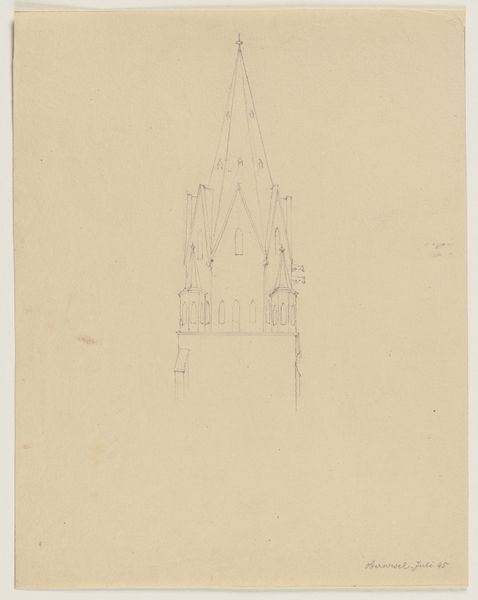
drawing, pencil
#
drawing
#
form
#
pencil
#
line
#
academic-art
Dimensions: height 309 mm, width 476 mm
Copyright: Rijks Museum: Open Domain
Editor: This is "Tafelstuk," a pencil drawing made sometime between 1830 and 1850 by Firma Feuchère. The detail is amazing, almost dizzying in its complexity. What can you tell me about its symbols and deeper meanings? Curator: Indeed, the ornamental detail is very evocative! Do you find any familiar forms emerging? Think about historical context and the recurrence of visual ideas. Editor: Well, I see these almost birdcage-like structures... is it reaching back to an earlier style, maybe a longing for a more ornamented past? Curator: Precisely! Consider the pencil lines – they suggest a yearning, a desire to capture elaborate designs that were perhaps already fading. Look closely; where do your eyes go first, and what feeling does that evoke? Editor: I'm drawn to the ornate tops, those little spires, they feel almost religious in their aspiration, or a status symbol... Curator: Good! Such forms carry echoes of religious architecture, symbolic of status and perhaps even spiritual aspirations through artistry. Firms like Feuchère were instrumental in shaping taste; What kind of taste were they intending to shape with that piece? Editor: One for detailed craft, maybe a little escapism with the detail and grand forms? Curator: Yes, an escape through visual complexity and references to a grand, perhaps idealized past. This design revives cultural memory, offering us glimpses of lost opulence through delicate pencil strokes. Editor: This has given me a new view on these drawings. It's much more than just a technical study! Curator: It reveals how a simple sketch contains encoded aspirations, beliefs, and values transmitted across generations. The past is always embedded within the present!
Comments
No comments
Be the first to comment and join the conversation on the ultimate creative platform.
